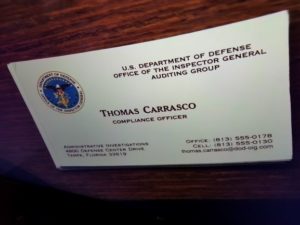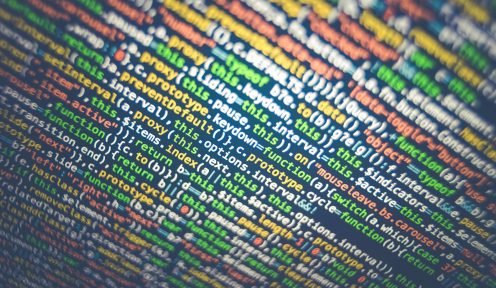
25.01.2021
Companies also commit crimes
 Por
Osa Otero, Sandra
Por
Osa Otero, Sandra Indeed, companies also commit crimes. The end of the corporate shelter has come. You, businessmen, managers…surely understand what I mean.
The countries that “draw” normatively from the Roman Law have been reluctant to accept the capacity of the companies to commit crimes. The famous Latin aphorism <<societas delinquere non potest>> inspired this principle.
But, what happens now? You´ll be wondering.
In view of the fact that a legal entity may be criminally guilty of committing crimes, some frequent questions are:
Who commits the crimes? Individuals or societies? What is a society so that it can commit a crime?
Well, through this article we intend to answer these questions. Companies also commit crimes.
Contacto No te quedes con la duda, contacta con nosotros. Estaremos encantados de atenderte y ofrecerte soluciones.Introduction
The current social reality has raised the need to subject legal persons to criminal liability. International pressure, led by collective entities and bodies, has brought about this legislative change. Another triggering factor has been globalization.
In this sense, it is necessary to highlight the Joint Action of the European Union of December 21, 1998 on organized crime. Also relevant is the 2009 Convention against Organized Crime. Likewise, the Decision of the Council of the European Union of June 13, 2002, on the fight against terrorism should be highlighted.
In short, on the international scene, the legislative orientation is firmly committed to subjecting legal entities to criminal liability.

Si te ha interesado este artículo no dudes en leer:
Mandatory protection for whistleblowers of crimes in a company
New implications and responsibilities for companies and managers
In 2010, the Criminal Code of 1995 is reformed by the Organic Law 5/2010, introducing several novelties. Subsequently, the Organic Law 1/2015 of March 30th, which modified the Criminal Code again, came into force.
Among such novelties, one stands out for its importance: the possibility of having legal entities as subjects of criminal responsability.
Criminal responsability of the company. Exemption or mitigation of penalty
In the first place, as indicated in the decision of the Provincial Court of Zaragoza, of 26 May 2017,
“so that the legal person can be convicted ex art. 31 bis and following. C., first of all, it is necessary that we are dealing with the commission of one of the crimes in the catalogue of those offences that may give rise to criminal liability for the legal person in whose name it is committed, as well as that the natural persons who are the perpetrators of that offence are part of that legal person” .
The new Article 31 bis of the Criminal Code establishes that legal persons will be criminally liable from two sides:
- For crimes committed in the name or on behalf of the legal person and for their direct or indirect benefit.
- For crimes committed in the exercise of corporate activities, on behalf of and for the benefit of the same.
In this regard, the ruling of Criminal Court No. 4 of Valencia, February 20, 2017, establishes that:
“Article 31 bis points out the requirements for the declaration of a legal person as the perpetrator of the crime, i.e., a crime committed by a natural person – legal representatives or employees – in the name or on behalf of a legal person or in the exercise of social activities on behalf of or for the direct or immediate benefit of the legal person, and that the legal person has failed to adopt the necessary organizational and management measures, including measures to monitor and control the possible typical results that the exercise of its activity by the legal person may produce. In designing this imputation of the legal person as perpetrator of the crime, the legislator has opted for a vicarial system, with the criminal responsibility of the natural person and that of the legal person being independent, each one of them being responsible for their own actions”.
Additionally, it is worth noting the Order of the Provincial Court of Navarre, dated March 7, 2017, which states that “the introduction of this precept implied the overcoming of the principle “societas delinquere non potest”, and implies that a legal entity may be subject to autonomous criminal liability and therefore be in the criminal process as the subject of the liability thereof”.
Because companies also commit crimes… Exemption from liability: the “plan for the prevention of crimes”
Of great relevance is also the provisions of article 31 bis on crime prevention plan. Because if it is proved that the measures cointaned in the plan, have been duly complied with, society would be exonerated.
Thus, the entity will be exonerated if the administrative body has adopted models of organization and management. Such models must be adopted before the commission of the crime. This is the so-called criminal compliance plan. Such measures must include appropriate monitoring and control to prevent crimes of the same nature.
The implementation of management and organizational models is not enough. Additionally, the supervision of the operation and compliance with the prevention model is required. This supervision is entrusted to an organ of the legal person with autonomous powers of initiative and control.
In addition, it is a requirement for the exoneration that the individual perpetrators have committed the crime evading the control plan implemented.
Organ of the legal entity with autonomous powers of initiative and control
Special mention should be made of the establishment of a body of the legal person with autonomous powers of initiative and control. This is an independent body that supervises and controls compliance with the crime prevention model.
In small legal entities these supervision and control functions may be assumed by the administrative body. We refer to entities authorized to present a shortened profit and loss account.
Penalty Relief
With reference to what circumstances may be considered mitigating circumstances, the Criminal Code establishes the following:
- Having proceeded to confess the infraction before knowing that the judicial proceedings are directed against such entity.
- Having collaborated in the investigation of the act by providing evidence at any time during the process. The evidence must be new and decisive in order to clarify the criminal responsibilities arising from the facts.
- Having proceeded at any time during the proceedings to repair or diminish the damage caused by the crime. In order for this fact to be considered mitigating, it must take place prior to the oral trial.
- To have established effective measures to prevent and discover crimes that may be committed in the future. Similarly, in order to be considered mitigating, the measures must be taken prior to the commencement of the oral trial.
What should the Prevention Model contain?
Based on the provisions of the Criminal Code, the crime prevention model should include:
- Identify the activities in whose scope the crimes to be prevented may be committed. Note that we are talking about activities and not crimes.
- Establish the protocols or procedures that specify the process of forming the will of the legal person.
- To have models for the management of financial resources that are adequate to prevent the commission of crimes that must be prevented.
- To establish a channel of complaints to report potential risks and non-compliances to the body in charge.
- To establish a disciplinary system that adequately sanctions non-compliance with the measures established by the model.
Conclusion
In short, legal entities can commit crimes. It is up to them to be exonerated thanks to the implementation of a criminal prevention plan.
However, it is also required the effective compliance of certain actions. Likewise, the continuous supervision and maintenance of the criminal compliance plan is required.
For all these reasons, it is likely that you will need to implement a criminal risk prevention plan in your entity.
If this article has been of interest, we also suggest you to read the following article published on our website: Is the administrator who is unaware of the injury that his or her actions generate responsible?.












